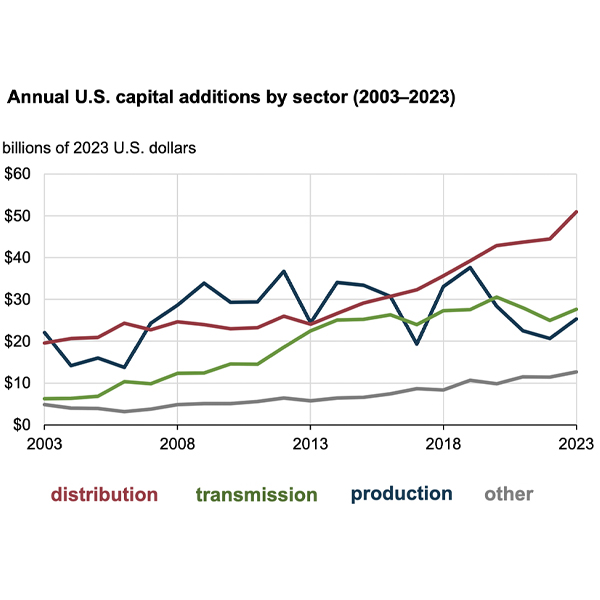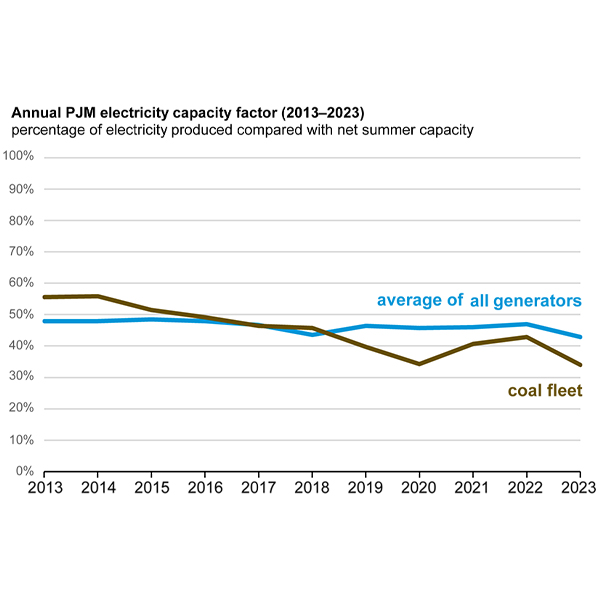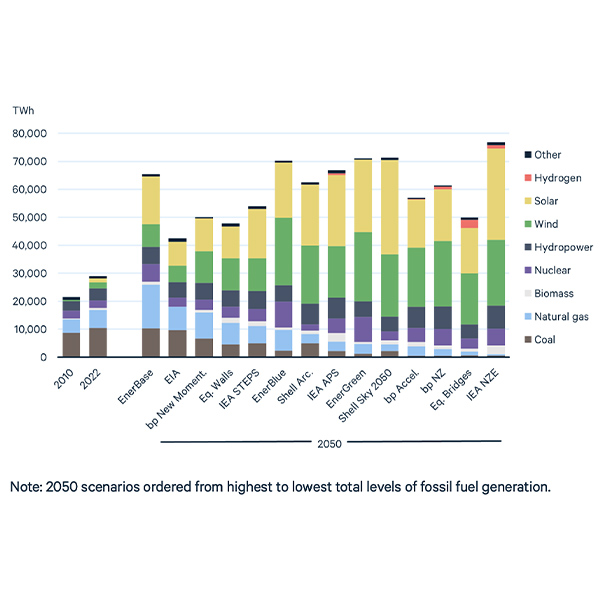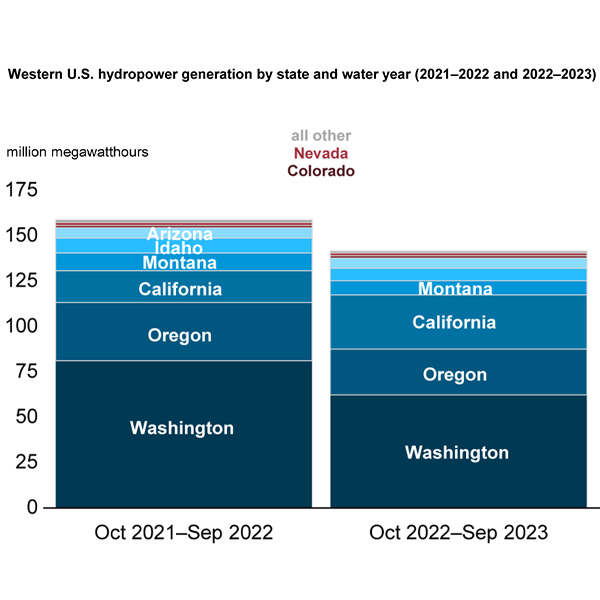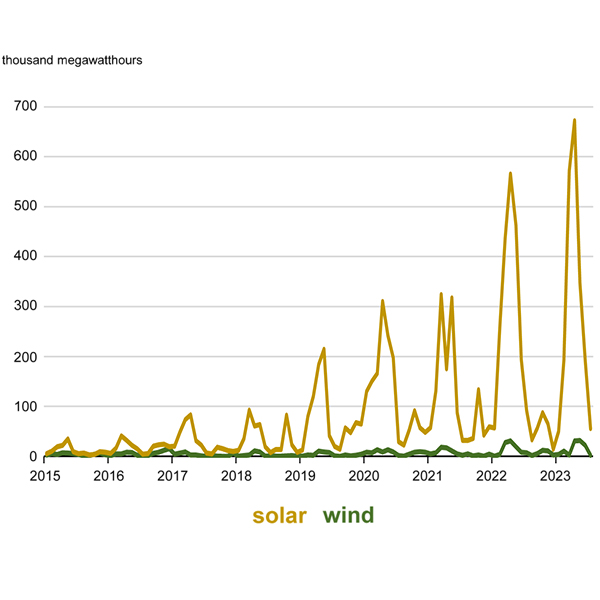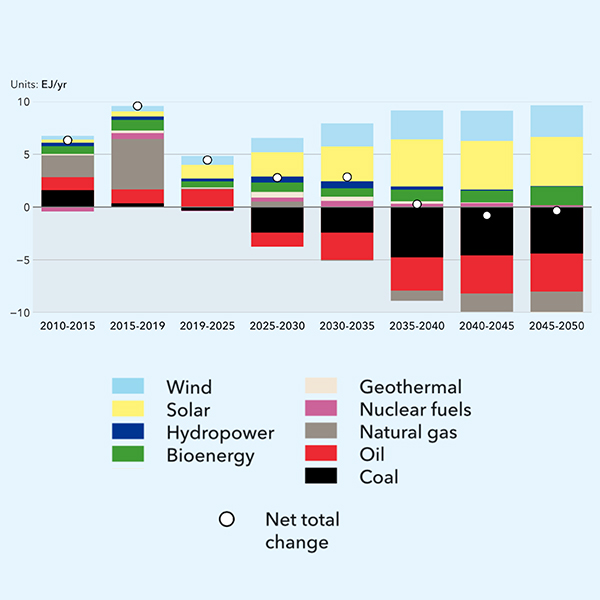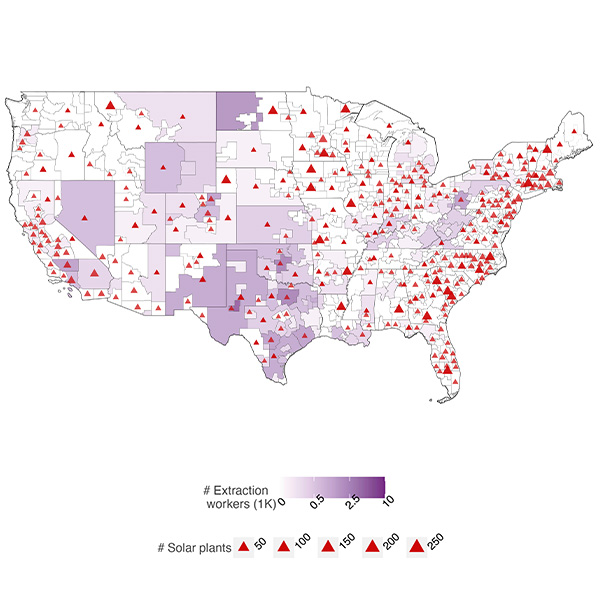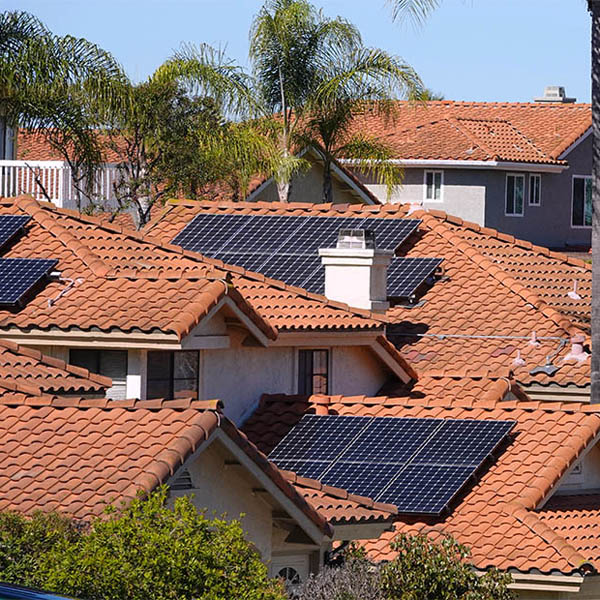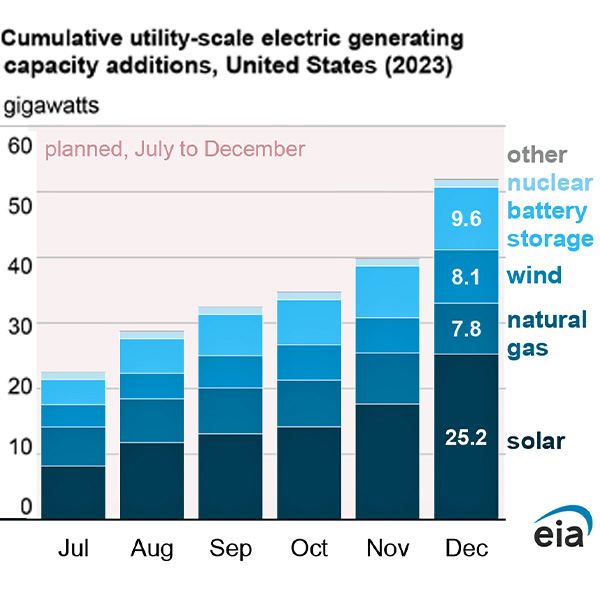Energy Information Administration (EIA)
EIA data on utility capital spending over the past 20 years shows that an increase in distribution and transmission spending outweighed declines in generation spending.
Analysis from EIA finds the average runtime for PJM coal-fired generators has declined sharply over the past decade because of increasing fuel and start-up costs.
Many recent projections for energy use have fossil fuel use plateauing after 2030, when it needs to rapidly decline to meet midcentury carbon targets, Resources for the Future said.
Despite record winter precipitation in California, hydroelectric generation in the Western U.S. fell to a 22-year low in the 2022/23 water year, largely due to drought conditions in Washington and Oregon.
The U.S. Energy Information Administration reports that fossil fuel generation retirements will slow in 2024 and that solar and storage will dominate capacity additions.
CAISO’s curtailment of solar and wind power is on the rise, and about three-quarters of curtailments so far this year have been from transmission congestion.
New reports by DNV and the EIA document the progress and challenges in the global effort to reduce greenhouse gas emissions.
Green jobs may be growing, but the vast majority of fossil fuel extraction workers whose jobs are threatened by the energy transition will not fill them, according to a new paper.
Installed small-scale solar capacity increased by an estimated 6.4 GW in 2022 — a record amount, even amid supply chain constraints and rising costs.
The Energy Information Administration gave contrasting snapshots of the U.S. energy sector Tuesday: oil production approaching a new high and solar power installation soaring as well.
Want more? Advanced Search
